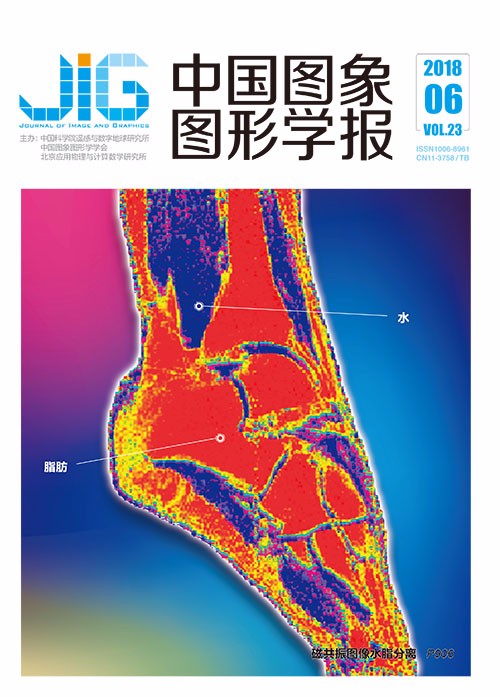
数字视频区域篡改的检测与定位
摘 要
目的 数字视频区域篡改是指视频帧图像的某个关键区域被覆盖或被替换,经过图像编辑和修补之后,该关键区域的修改痕迹很难通过肉眼来分辨。视频图像的关键区域承载了视频序列的关键语义信息。如果该篡改操作属于恶意的伪造行为,将产生非常严重的影响和后果。因此,视频区域篡改的检测与定位研究具有重要的研究价值和应用前景。方法 数字图像的复制粘贴篡改检测已经取得较大的研究进展,相关研究成果也很多。但是,数字视频区域篡改的检测与定位不能直接采用数字图像的复制—粘贴篡改取证算法。数字视频区域篡改检测与定位是数字视频被动取证研究领域中的一个新兴的研究方向,近年来越来越多的学者在该领域开展研究工作。目前,数字视频的区域篡改检测与定位研究还缺少完善的理论支撑和通用的检测与定位算法。在广泛调研最近几年的最新研究成果的基础上,对数字视频区域篡改的被动取证概念及重要性进行了介绍,将现有的数字视频区域篡改被动取证算法分为4类:基于噪声模式的算法、基于像素相关性的算法、基于视频内容特征的算法和基于抽象统计特征的算法。然后,对这些区域篡改检测与定位的算法进行对比分析,并介绍现有的视频区域篡改软件和算法,以及篡改检测算法的测试数据库。最后,对本研究领域存在的问题和挑战进行总结,并对未来的研究趋势进行展望。结果 选取了20篇文献中的18种算法,分别介绍每种算法的算法原理,并对这些算法进行对比分析。大部分的算法都宣称可以检测并定位出篡改可疑区域,但是检测和定位的精度、计算复杂度都各有差异。其中,基于时空域的像素相关性分析的算法具有较好的检测和定位效果,并且支持运动背景视频中的运动目标删除篡改检测和定位。基于光流平滑性异常的算法和基于运动目标检测的算法都是基于公开的视频篡改测试库进行比较测试的,两种算法都具有较好的检测和定位效果。基于隐写分析特征提取的集成分类算法虽然只能实现时域上的篡改定位,不能实现更精细的空域篡改定位,但是该算法为基于机器学习的大规模视频篡改取证研究提供了新思路和可能的发展方向,具有较大的指导意义。结论 由于视频编码压缩引入噪声,以及视频区域篡改软件工具和技术的改进,视频区域篡改检测和定位仍是一个极具挑战的课题。未来几年,基于视频内容特征和抽象统计特征的视频区域篡改检测和定位算法,有可能结合深度学习算法,得到进一步的研究和发展;相关的理论算法、系统模型和评价标准等研究成果将逐步完善。
关键词
Detection and localization of digital video regional tampering
Yao Ye1, Hu Weitong1, Ren Yizhi1, Weng Shaowei2(1.School of CyberSpace Security, Hangzhou Dianzi University, Hangzhou 310018, China;2.School of Information Engineering, Guangdong University of Technology, Guangzhou 510006, China) Abstract
Objective Digital video regional tampering is a technology that can overwrite or replace a critical area of a video frame. After image inpainting, the modified traces of the critical area cannot be directly identified by human eyes. The critical region of the video frame carries the key semantic information of the video sequence. If the video regional tampering is a malicious behavior of the attacker, then it will have a serious impact. Therefore, detection and localization of video regional tampering have significant research value and application prospects. Method The detection of digital image copy-move tampering has been successful and many methods have been proposed. However, the detection and localization of digital video regional tampering cannot directly use tampering detection algorithms of digital images. Video tampering detection and localization are new research topics in digital video passive forensics. In recent years, numerous scholars have focused on the research on video tampering detection. However, no systematic theoretical framework or universal algorithm for regional tampering detection and location of digital videos is available at present. The concept and importance of digital video regional tampering forensics are first introduced based on extensive studies and achievements reported on the existing literature. Then, the current passive forensic algorithms for video regional tampering are divided into the following four categories: based on pattern noise, based on pixel correlation, based on video codec features, and based on statistical features. These passive forensic algorithms are discussed and compared, and video regional tampering tools and video forensic data sets are introduced. Finally, we summarize the problems and challenges and propose possible future research trends in video regional tampering detection and location. Result In this study, we select 18 algorithms in 20 works to introduce the methods of each algorithm and compare the algorithms individually. Most of the algorithms claim that they can detect and locate tampering region, but the accuracy and computational complexity of detection and localization are different. Among these methods, the algorithm based on pixel spatial-temporal coherence analysis has achieved good detection and localization performance in moving background video sequences. The algorithm based on the optical flow smoothing anomaly and the algorithm based on the moving object detection have obtained good detection performance on the public video forgery dataset. The ensemble classification algorithm based on steganalysis feature extraction is a tampering localization method in the temporal domain based on machine learning and steganalysis feature extraction. Although this method cannot achieve spatial tampering localization, it develops a new research direction based on machine learning for large-scale video tampering detection. Conclusion Video regional tampering detection and localization are challenging research topics due to the noise introduced by video compression and the improvement of video tampering software tools. In the next several years, the video regional tampering detection and localization algorithm based on video content feature and abstract statistical characteristics may be further studied and developed in combination with deep learning networks. Furthermore, theoretical framework, system model, and evaluation standard will be gradually improved.
Keywords
video passive forensic tampering detection and localization pixel correlation video codec features statistical features
|



 中国图象图形学报 │ 京ICP备05080539号-4 │ 本系统由
中国图象图形学报 │ 京ICP备05080539号-4 │ 本系统由